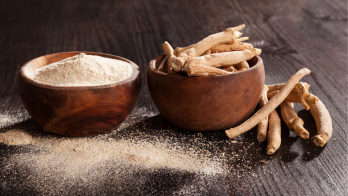How to level up your nutrition to get the most out of your workouts
Whether you’re looking to improve your physique, become more flexible, or boost your mood, chances are that you’ve turned to exercise to help you along the way. But where does nutrition fit into this equation? Here’s what science has to say about leveling up your macros and supplements to get the most out of your workouts.

Exercise is often thought of as the best (and most effective) way to look and feel your best. For a good reason–science continues to show that regular physical activity can reduce the risk of chronic disease, improve longevity, build stronger bones, and boost mental health. While regular exercise is something we should all strive for, this is only part of the health and wellness equation. What you put on your plate also significantly affects your overall health, performance, and recovery. By eating a balanced diet tailored to your specific energy and nutrient needs, you can elevate your workouts and how you feel.
But you don’t need to be an elite athlete to reap the benefits of good nutrition and exercise! Before diving into how food and supplements can maximize your workout routine, let’s explore what exercise is, how much you should do, and some health benefits.
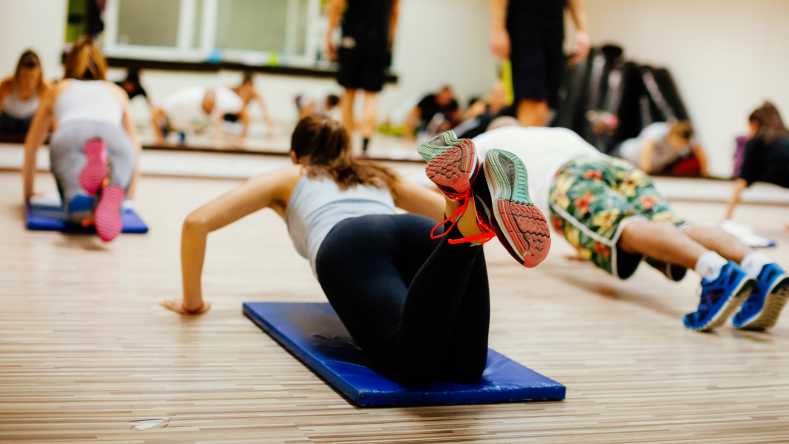
What is exercise?
By definition, exercise is classified as any movement that exerts your muscles and requires your body to burn calories [ 1
Cardiovascular. This is defined as any exercise that elevates your heart rate for a prolonged period. Some examples include swimming, running, jogging, walking, and dancing.
Resistance training. Otherwise referred to as strength or weight training, resistance training builds strength, anaerobic endurance, and the size of skeletal muscles. You can do resistance training with bodyweight exercises or weighted dumbbells, machines, or barbells.
HIIT. High-intensity interval training (HIIT) involves alternating short bouts of intense exercise at maximum or near-maximum effort (like sprinting, jumping, and intense strength training) with short recovery periods, repeatedly until the point of exhaustion.
Flexibility. Exercises like yoga, tai chi, dynamic stretching, and pilates can decrease the risk of injury, minimize soreness, and improve your range of motion.
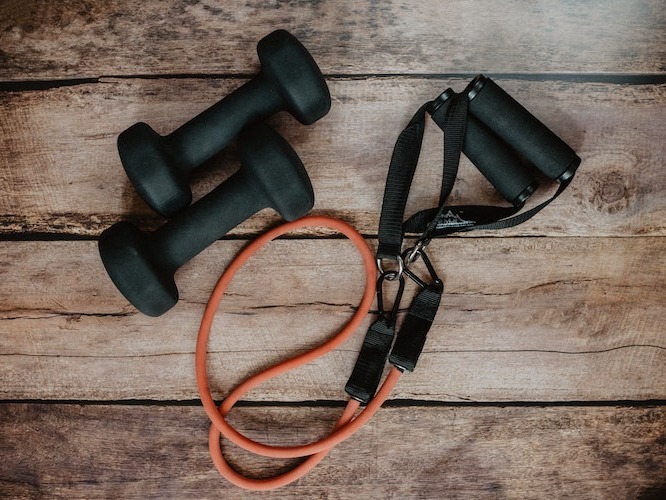
Exercise recommendations
The Department of Health and Human Services recommends at least 30 minutes of moderate physical activity/day, 150 minutes of moderate aerobic activity/week, or 75 minutes of vigorous exercise/week for improved health and wellness [ 2
However, the American College of Sports Medicine states that 150 to 250 minutes of exercise/week can yield modest weight-loss results if you want to lose weight. Conversely, getting >250 minutes of exercise per week has been associated with clinically significant weight loss [ 3 8
If you have a specific goal like running a half-marathon or completing a triathlon, you will likely exceed these recommendations to prepare for the event; however, you will also need to incorporate extra rest and recovery strategies to prevent overtraining
Before embarking on a new exercise routine, it’s recommended to see a healthcare provider first.
Benefits of exercise
Exercise has benefits that go far beyond physical physique. Here’s what science has to say about how consistent movement impacts your health.
Longevity.
Studies show that people who consistently exercise experience a lower risk of developing cardiovascular disease and type 2 diabetes and are less likely to die sooner than those who live a sedentary lifestyle [ 5 4
However, research suggests that just 11 minutes of movement each day may be enough to positively impact your lifespan, regardless of your past activity levels [ 5 6
Weight management.
It is well known that physical activity can help with weight management and weight loss. However, exercise alone isn’t enough to maintain a healthy weight; what you put on your fork also plays a factor.
Exercise’s impact on weight management or weight loss revolves around energy homeostasis. For instance, if you’re looking to lose weight, then the number of calories consumed should be less than the calories burned, and since it takes 3,500 calories (on average) to burn one pound, this means both diet and exercise play important roles in weight loss [ 7
Your energy needs are unique to you and your body, so talk with your healthcare provider to find the right exercise and nutrition combination for you.
Better sleep.
Studies have shown that exercise may decrease the time it takes to fall asleep, alleviate daytime sleepiness, and possibly reduce the need for sleep medications [ 9 42
Stronger bones.
Weight-bearing activity (such as body weight exercises or weight lifting) has been shown to increase bone formation, protect bone health in older adults, and enhance bone strength over time. Additionally, research indicates that older men and women who perform weight-bearing exercises are more likely to experience a positive increase in bone mineral density, bone strength, and bone size, as well as reductions in markers of bone turnover and inflammation [ 10 11 12
Resistance training may also prove beneficial against bone loss in younger and older women, including those with osteoporosis, osteopenia, or breast cancer [ 13 14
Reduced risk of chronic disease.
Regular physical activity may help prevent chronic disease, as numerous studies show its importance in reducing the risk of cardiovascular disease, certain cancers, and type 2 diabetes [ 15 16 17 18
Improved mental health.
Studies show that 89% of people who participated in regular physical activity experienced a positive impact on depression, anxiety, stress levels, and general mental health [ 19 19
Learn more about
how nutrition impacts mood, focus, and brain health
.
Nutrition’s impact on exercise
While exercise is beneficial for many aspects of your health, nutrition also plays an essential role in boosting performance and helping you feel your best. Here’s how you can level up your nutrition to boost health and get the most out of your workouts.
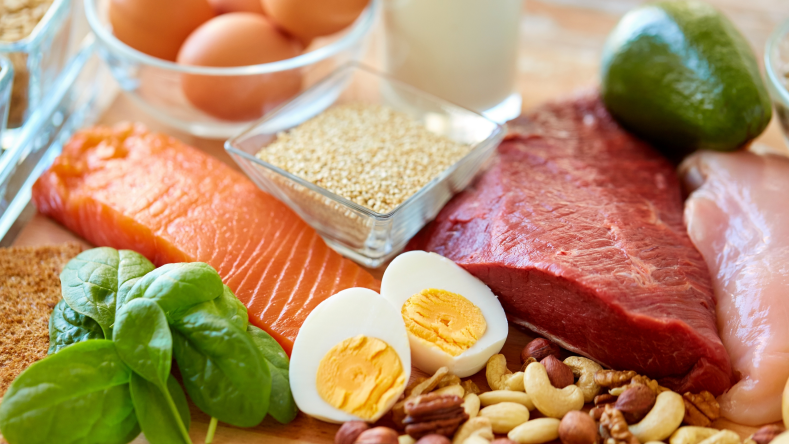
Protein
Protein (and protein powders 20 21 22
According to the Recommended Dietary Allowance (RDA), you need at least 0.8 g of protein/kg of body weight/day to meet the body’s most fundamental nutritional needs [ 23 24
Some dietary sources include:
Poultry (chicken and turkey)
Red meat (beef and lamb)
Fish
Dairy
Legumes
Eggs
Tofu
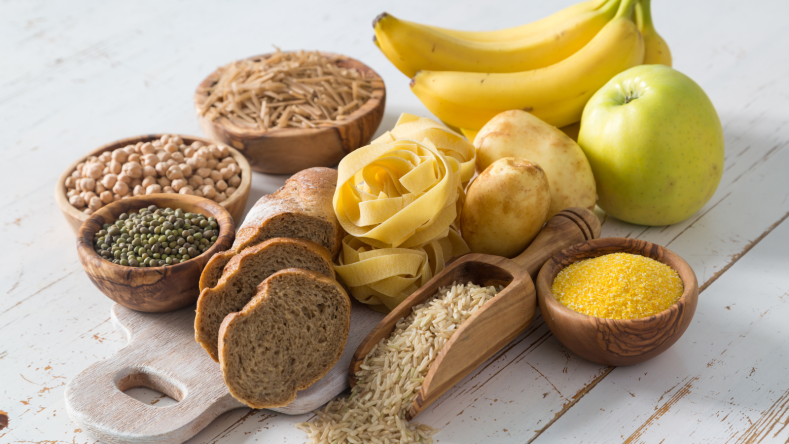
Carbohydrates
Carbohydrates 25 26 45 46
The Dietary Guidelines for Americans recommend that 45% to 65% of total daily calories should come from carbs, but you can also match your daily carbohydrate intake to the energy requirements of your workout, which can range between 5-12 g/kg of body weight/day [ 27 28 47
Some dietary sources of complex carbs include:
Whole grains (quinoa, barley, brown rice, popcorn, and oats)
Legumes (lentils, chickpeas, kidney beans, green peas, and split peas)
Starchy vegetables (potatoes, sweet potatoes, and corn)
High fiber fruits (berries, avocado, guava, bananas, oranges and apples)
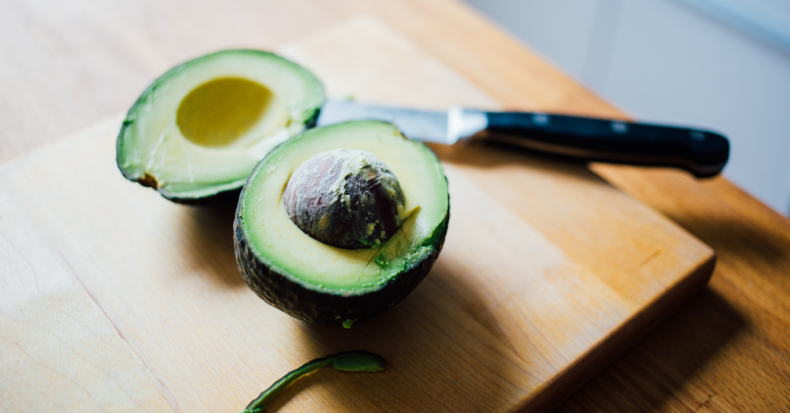
Heart-healthy fats
Not all fats are created equal. While saturated and trans-fats have been tied to adverse health outcomes, healthy fats (like omega-3s, mono- and polyunsaturated fats) may help reduce inflammation, improve total cholesterol levels, and stabilize heart rhythms [ 29 30 31 32
The dietary reference intake (DRI) for fat in adults is 20% to 35% of total calories from fat, with 15-20% and 5-10% coming from mono- and polyunsaturated fats, respectively [ 33
Some dietary sources of heart-healthy fats include:
Nuts
Seeds
Avocados
Olive oil
Salmon and fatty fish

Fluid
A single exercise session can leave you parched, foggy, and nauseous if you don't replenish your fluids. Dehydration can compromise exercise performance and lead to dangerous health consequences, so it’s essential to ensure that you stay hydrated before, during, and after your workout. Adequate fluid intake also helps regulate body temperature, reduce cardiovascular strain and improve recovery [ 43
Daily fluid intake recommendations vary by age, sex, pregnancy, and breastfeeding status, but you can monitor your urine color as an approximation of hydration status. Urine that is lemonade-colored or lighter generally means that you’re hydrated, whereas dark yellow urine is a sign of dehydration.
While water is best, sports drinks can prove beneficial during and after more prolonged endurance activities since they contain a combination of water (for hydration), carbohydrates (for quick-burning fuel), and electrolytes (to offset those lost in sweat).
Caloric intake
While everyone’s caloric needs are different, it can be helpful to use a tool such as the National Institute of Health’s Body Weight Planner calculator

Supplements for exercise
A balanced diet consisting of protein, carbs, and healthy fats boost health and fitness, but science shows that supplementation may also prove beneficial. Here are some supplements you may want to consider adding to your daily routine to enhance performance.
Caffeine. Studies show caffeine can improve endurance performance, spare glycogen, promote fat oxidation, reduce fatigue, and decrease perceived effort when consumed before exercise in doses ranging from 3-9 mg/kg body weight [
34
].Nitrates. Nitrates from beetroot juice can also assist with endurance performance. For example, consuming nitrates before exercise enhances vasodilation, blood flow, glucose uptake, muscle contraction, and relaxation. Evidence suggests these effects can improve muscle function, cardiorespiratory capacity, and time trial performance, particularly in non-elite athletes [
34
]. Research also shows that consuming 300-600 mg of nitrates 90 minutes before endurance exercise helps reduce the oxygen cost of exercise, increases time to exhaustion, and improves VO2max [34
].Beta-alanine. Beta-alanine is a non-essential amino acid that can buffer lactic acid production and assist with endurance exercise. One trial showed that 5 g/day beta-alanine supplementation improved 10K running time and reduced lactate concentration in active adults [
35
].Creatine
. Creatine is a compound of amino acids (including L-arginine, glycine, and L-methionine) naturally found in muscle cells. It supplies energy to your muscles to aid growth, strength, and performance [36
]. Studies have shown that creatine combined with weight lifting can increase lean muscle mass gains compared to those who only weight train without supplementation [37
,38
]. Research has found that your body needs between 1-3 g/day to maintain typical stores of creatine, but athletes may need to consume between 5 and 10 g/day to maintain an optimal capacity [44
].Protein powder
. Protein powder is a powdered protein from milk (casein or whey), egg white powder, or plant sources (soy, pea, rice, pumpkin seed, and hemp). This supplement offers many health benefits, including increased exercise performance, reduced muscle damage, and faster tissue repair [39
,40
,41
].

Exercise FAQ
Looking for more? Here are some common questions we get surrounding exercise and nutrition.
Summary
Regular physical activity has long been shown to reduce the risk of chronic disease, improve longevity, build stronger bones, and boost mental health. While exercise can be effective on its own, you can elevate your workout game even more by what you put on your plate. Eating a balanced diet filled with protein, carbs, and healthy fats (while being tailored to your energy needs) will continue to boost your gains, both in and out of the gym.
Disclaimer: The text, images, videos, and other media on this page are provided for informational purposes only and are not intended to treat, diagnose or replace personalized medical care.
Key takeaways
Exercise is defined as any movement that exerts your muscles and requires your body to burn calories [
1
].Studies show that people who consistently exercise experience a lower risk of developing cardiovascular disease, certain cancers, and type 2 diabetes, and are less likely to die sooner than those who live a sedentary lifestyle [
5
,15
,16
,17
,18
].Adequate protein intake has been associated with increased exercise performance, reduced muscle damage, faster tissue repair, weight management, and muscle gain [
20
,21
,22
].Carbohydrates provide quick, usable energy, help load and replenish muscle glycogen stores, and play a key role in cholesterol maintenance, weight management, appetite control, blood sugar regulation, reduced risk of certain chronic diseases, and enhanced satiety and longevity [
45
,46
].Healthy fats may help reduce inflammation, improve total cholesterol levels, stabilize heart rhythms, enhance satiation, and maintain a healthy weight [
29
,30
,31
,32
].Supplements like caffeine, nitrates, beta-alanine, creatine, and protein powder have been found to have a positive impact on performance.
References:
U.S. National Library of Medicine. (n.d.). Definitions of health terms: Fitness. MedlinePlus. Retrieved June 8, 2022, from
https://medlineplus.gov/definitions/fitnessdefinitions.html
Edward R. Laskowski, M. D. (2021, September 22). How much exercise do you really need? Mayo Clinic. Retrieved June 8, 2022, from
https://www.mayoclinic.org/healthy-lifestyle/fitness/expert-answers/exercise/faq-20057916
Donnelly, Joseph E., Blair, Steven N., Jakicic, John M., Manore, Melinda M., Rankin, Janet W., & Smith, Bryan K. (2009). Appropriate physical activity intervention strategies for weight loss and prevention of weight regain for adults. Medicine & Science in Sports & Exercise, 41(2), 459–471.
https://doi.org/10.1249/mss.0b013e3181949333
Centers for Disease Control and Prevention. (2018, March 29). Percentage of deaths associated with inadequate physical activity in the United States. Centers for Disease Control and Prevention. Retrieved June 8, 2022, from
https://www.cdc.gov/pcd/issues/2018/17_0354.htm
Ekelund, U., Tarp, J., Fagerland, M. W., Johannessen, J. S., Hansen, B. H., Jefferis, B. J., Whincup, P. H., Diaz, K. M., Hooker, S., Howard, V. J., Chernofsky, A., Larson, M. G., Spartano, N., Vasan, R. S., Dohrn, I.-M., Hagströmer, M., Edwardson, C., Yates, T., Shiroma, E. J., … Lee, I.-M. (2020, December 1). Joint Associations of accelerometer-measured physical activity and sedentary time with all-cause mortality: A harmonised meta-analysis in more than 44 000 middle-aged and older individuals. British Journal of Sports Medicine. Retrieved June 8, 2022, from
https://bjsm.bmj.com/content/54/24/1499
Mok, A., Khaw, K.-T., Luben, R., Wareham, N., & Brage, S. (2019, June 26). Physical activity trajectories and mortality: Population based Cohort Study. The BMJ. Retrieved June 8, 2022, from
https://www.bmj.com/content/365/bmj.l2323
Guth, E. (2014). Healthy weight loss. JAMA, 312(9), 974.
https://doi.org/10.1001/jama.2014.10929
Physical activity guidelines resources. ACSM_CMS. (n.d.). Retrieved June 8, 2022, from
https://www.acsm.org/education-resources/trending-topics-resources/physical-activity-guidelines
How can exercise affect sleep? Sleep Foundation. (2022, May 6). Retrieved June 8, 2022, from
https://www.sleepfoundation.org/physical-activity/exercise-and-sleep
Bhatia, V. A., Edwards, W. B., Johnson, J. E., & Troy, K. L. (2015). Short-term bone formation is greatest within high strain regions of the human distal radius: a prospective pilot study. Journal of biomechanical engineering, 137(1), 0110011–0110015.
https://doi.org/10.1115/1.4028847
Klentrou, P., Slack, J., Roy, B., & Ladouceur, M. (2007). Effects of exercise training with weighted vests on bone turnover and isokinetic strength in postmenopausal women. Journal of aging and physical activity, 15(3), 287–299.
https://doi.org/10.1123/japa.15.3.287
Vainionpää, A., Korpelainen, R., Sievänen, H., Vihriälä, E., Leppäluoto, J., & Jämsä, T. (2007). Effect of impact exercise and its intensity on bone geometry at weight-bearing tibia and femur. Bone, 40(3), 604–611.
https://doi.org/10.1016/j.bone.2006.10.005
Martyn-St James, M., & Carroll, S. (2010). Effects of different impact exercise modalities on bone mineral density in premenopausal women: a meta-analysis. Journal of bone and mineral metabolism, 28(3), 251–267.
https://doi.org/10.1007/s00774-009-0139-6
Moreira, L. D., Oliveira, M. L., Lirani-Galvão, A. P., Marin-Mio, R. V., Santos, R. N., & Lazaretti-Castro, M. (2014). Physical exercise and osteoporosis: effects of different types of exercises on bone and physical function of postmenopausal women. Arquivos brasileiros de endocrinologia e metabologia, 58(5), 514–522.
https://doi.org/10.1590/0004-2730000003374
Nystoriak, M. A., & Bhatnagar, A. (2018). Cardiovascular Effects and Benefits of Exercise. Frontiers in cardiovascular medicine, 5, 135.
https://doi.org/10.3389/fcvm.2018.00135
Wang, Q., & Zhou, W. (2021). Roles and molecular mechanisms of physical exercise in cancer prevention and treatment. Journal of Sport and Health Science, 10(2), 201–210.
https://doi.org/10.1016/j.jshs.2020.07.008
Sgrò, P., Emerenziani, G. P., Antinozzi, C., Sacchetti, M., & Di Luigi, L. (2021). Exercise as a drug for glucose management and prevention in type 2 diabetes mellitus. Current Opinion in Pharmacology, 59, 95–102.
https://doi.org/10.1016/j.coph.2021.05.006
Barton, M., & Cardillo, C. (2020). Exercise is medicine: Key to cardiovascular disease and diabetes prevention. Cardiovascular Research, 117(2), 360–363.
https://doi.org/10.1093/cvr/cvaa226
Move your mental health™ report. John W Brick Foundation. (n.d.). Retrieved June 8, 2022, from
https://www.johnwbrickfoundation.org/move-your-mental-health-report/
Morton, R. W., Murphy, K. T., McKellar, S. R., Schoenfeld, B. J., Henselmans, M., Helms, E., Aragon, A. A., Devries, M. C., Banfield, L., Krieger, J. W., & Phillips, S. M. (2018, March 1). A systematic review, meta-analysis and meta-regression of the effect of protein supplementation on resistance training-induced gains in muscle mass and strength in healthy adults. British Journal of Sports Medicine. Retrieved June 8, 2022, from
https://bjsm.bmj.com/content/52/6/376
Brown, M. A., Stevenson, E. J., & Howatson, G. (2018). Whey protein hydrolysate supplementation accelerates recovery from exercise-induced muscle damage in females. Applied physiology, nutrition, and metabolism = Physiologie appliquee, nutrition et metabolisme, 43(4), 324–330.
https://doi.org/10.1139/apnm-2017-0412
Kim, J., Lee, C., & Lee, J. (2017). Effect of timing of whey protein supplement on muscle damage markers after eccentric exercise. Journal of exercise rehabilitation, 13(4), 436–440.
https://doi.org/10.12965/jer.1735034.517
National Academies Press. (2005). Dietary reference intakes for energy, carbohydrate, fiber, fat, fatty acids, cholesterol, protein, and amino acids.
https://nap.nationalacademies.org/read/10490/chapter/12
Nutrition and athletic performance. (2016). Medicine & Science in Sports & Exercise, 48(3), 543–568.
https://doi.org/10.1249/mss.0000000000000852
Jeukendrup A. (2014). A step towards personalized sports nutrition: carbohydrate intake during exercise. Sports medicine (Auckland, N.Z.), 44 Suppl 1(Suppl 1), S25–S33.
https://doi.org/10.1007/s40279-014-0148-z
Bussau, V. A., Fairchild, T. J., Rao, A., Steele, P., & Fournier, P. A. (2002). Carbohydrate loading in human muscle: an improved 1 day protocol. European journal of applied physiology, 87(3), 290–295.
https://doi.org/10.1007/s00421-002-0621-5
Jeukendrup, A. E. (2011). Nutrition for endurance sports: Marathon, triathlon, and road cycling. Journal of Sports Sciences, 29(sup1).
https://doi.org/10.1080/02640414.2011.610348
Mata, F., Valenzuela, P. L., Gimenez, J., Tur, C., Ferreria, D., Domínguez, R., Sanchez-Oliver, A. J., & Martínez Sanz, J. M. (2019). Carbohydrate availability and physical performance: Physiological overview and practical recommendations. Nutrients, 11(5), 1084.
https://doi.org/10.3390/nu11051084
Fritsche K. L. (2015). The science of fatty acids and inflammation. Advances in nutrition (Bethesda, Md.), 6(3), 293S–301S.
https://doi.org/10.3945/an.114.006940
Rennison, J. H., & Van Wagoner, D. R. (2009). Impact of dietary fatty acids on cardiac arrhythmogenesis. Circulation. Arrhythmia and electrophysiology, 2(4), 460–469.
https://doi.org/10.1161/CIRCEP.109.880773
The skinny on fats. www.heart.org. (2021, May 7). Retrieved June 8, 2022, from
https://www.heart.org/en/health-topics/cholesterol/prevention-and-treatment-of-high-cholesterol-hyperlipidemia/the-skinny-on-fats
Kaippert, V. C., dos Santos Lopes, M., de Carvalho, P. D., & Rosado, E. L. (2015). Effects of unsaturated fatty acids on weight loss, body composition and obesity related biomarkers. Diabetology & Metabolic Syndrome, 7(Suppl 1), A139.
https://doi.org/10.1186/1758-5996-7-S1-A139
U.S. Department of Health and Human Services. (n.d.). Office of dietary supplements - nutrient recommendations : Dietary reference intakes (DRI). NIH Office of Dietary Supplements. Retrieved June 8, 2022, from
https://ods.od.nih.gov/HealthInformation/Dietary_Reference_Intakes.aspx
Vitale, K., & Getzin, A. (2019). Nutrition and supplement update for the endurance athlete: Review and recommendations. Nutrients, 11(6), 1289.
https://doi.org/10.3390/nu11061289
Santana, J. O., de Freitas, M. C., dos Santos, D. M., Rossi, F. E., Lira, F. S., Rosa-Neto, J. C., & Caperuto, E. C. (2018). Beta-alanine supplementation improved 10-km running time trial in physically active adults. Frontiers in Physiology, 9.
https://doi.org/10.3389/fphys.2018.01105
Creatine & Creatine supplements: What is creatine, are supplements safe. Cleveland Clinic. (n.d.). Retrieved June 8, 2022, from
https://my.clevelandclinic.org/health/articles/17674-creatine-and-creatine-supplements
Eliot, K. A., Knehans, A. W., Bemben, D. A., Witten, M. S., Carter, J., & Bemben, M. G. (2008). The effects of creatine and whey protein supplementation on body composition in men aged 48 to 72 years during resistance training. The Journal of Nutrition Health and Aging, 12(3), 208–212.
https://doi.org/10.1007/bf02982622
Rawson, E. S., & Venezia, A. C. (2011). Use of creatine in the elderly and evidence for effects on cognitive function in young and old. Amino Acids, 40(5), 1349–1362.
https://doi.org/10.1007/s00726-011-0855-9
Morton, R. W., Murphy, K. T., McKellar, S. R., Schoenfeld, B. J., Henselmans, M., Helms, E., Aragon, A. A., Devries, M. C., Banfield, L., Krieger, J. W., & Phillips, S. M. (2017). A systematic review, meta-analysis and meta-regression of the effect of protein supplementation on resistance training-induced gains in muscle mass and strength in healthy adults. British Journal of Sports Medicine, 52(6), 376–384.
https://doi.org/10.1136/bjsports-2017-097608
Brown, M. A., Stevenson, E. J., & Howatson, G. (2018). Whey protein hydrolysate supplementation accelerates recovery from exercise-induced muscle damage in females. Applied physiology, nutrition, and metabolism = Physiologie appliquee, nutrition et metabolisme, 43(4), 324–330.
https://doi.org/10.1139/apnm-2017-0412
Kim, J., Lee, C., & Lee, J. (2017). Effect of timing of whey protein supplement on muscle damage markers after eccentric exercise. Journal of exercise rehabilitation, 13(4), 436–440.
https://doi.org/10.12965/jer.1735034.517
Dolezal, B. A., Neufeld, E. V., Boland, D. M., Martin, J. L., & Cooper, C. B. (2017). Interrelationship between Sleep and Exercise: A Systematic Review. Advances in preventive medicine, 2017, 1364387.
https://doi.org/10.1155/2017/1364387
Judge, L. W., Bellar, D. M., Popp, J. K., Craig, B. W., Schoeff, M. A., Hoover, D. L., Fox, B., Kistler, B. M., & Al-Nawaiseh, A. M. (2021). Hydration to Maximize Performance and Recovery: Knowledge, Attitudes, and Behaviors Among Collegiate Track and Field Throwers. Journal of human kinetics, 79, 111–122.
https://doi.org/10.2478/hukin-2021-0065
Kreider, R. B., Kalman, D. S., Antonio, J., Ziegenfuss, T. N., Wildman, R., Collins, R., Candow, D. G., Kleiner, S. M., Almada, A. L., & Lopez, H. L. (2017). International Society of Sports Nutrition Position Stand: Safety and efficacy of creatine supplementation in exercise, sport, and medicine. Journal of the International Society of Sports Nutrition, 14(1).
https://doi.org/10.1186/s12970-017-0173-z
Greenhill, C. (2016). Fermentable carbohydrates increase satiety signals. Nature Reviews Endocrinology, 13(1), 3–3.
https://doi.org/10.1038/nrendo.2016.199
Pan, A., & Hu, F. B. (2011). Effects of carbohydrates on satiety: differences between liquid and solid food. Current opinion in clinical nutrition and metabolic care, 14(4), 385–390.
https://doi.org/10.1097/MCO.0b013e328346df36
Current dietary guidelines. Dietary Guidelines for Americans, 2020-2025 and Online Materials | Dietary Guidelines for Americans. (n.d.). Retrieved June 9, 2022, from
https://www.dietaryguidelines.gov/resources/2020-2025-dietary-guidelines-online-materials




